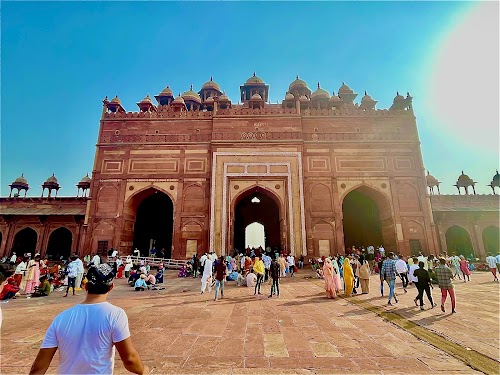
Jama Masjid
Fatehpur Sikri, India
- Admire the Buland Darwaza's massive structure.
- Capture stunning photos of Mughal architecture.
- Explore the mosque's intricate marble carvings.
- Learn about the mosque's historical significance.
- Offer prayers in the serene prayer hall.
Known for:
Description:
Jama Masjid in Fatehpur Sikri is a magnificent mosque, a testament to Mughal architectural grandeur. Its vast courtyard, intricate carvings, and towering gateways create a serene and awe-inspiring atmosphere. The mosque is not just a place of worship but also a historical landmark that showcases the artistic and religious influences of the Mughal era. Visitors can admire the Buland Darwaza, one of the largest gateways in the world, and explore the serene interior adorned with exquisite marble work and Persian inscriptions. The spiritual ambiance and architectural splendor make Jama Masjid a must-visit destination for anyone exploring Fatehpur Sikri. Don't miss the chance to experience the tranquility and historical significance of this iconic mosque.
History:
Commissioned by Emperor Akbar and completed in 1571 AD, Jama Masjid was one of the first buildings constructed in the newly established city of Fatehpur Sikri. It was designed as the central mosque for the city, reflecting Akbar's religious tolerance and his desire to create a harmonious blend of different architectural styles. The mosque's construction involved skilled artisans from India and Persia, resulting in a unique fusion of Indian and Persian architectural elements. Over the centuries, Jama Masjid has remained a significant religious and historical site, witnessing the rise and fall of the Mughal Empire and serving as a symbol of Akbar's vision for a united and prosperous India.